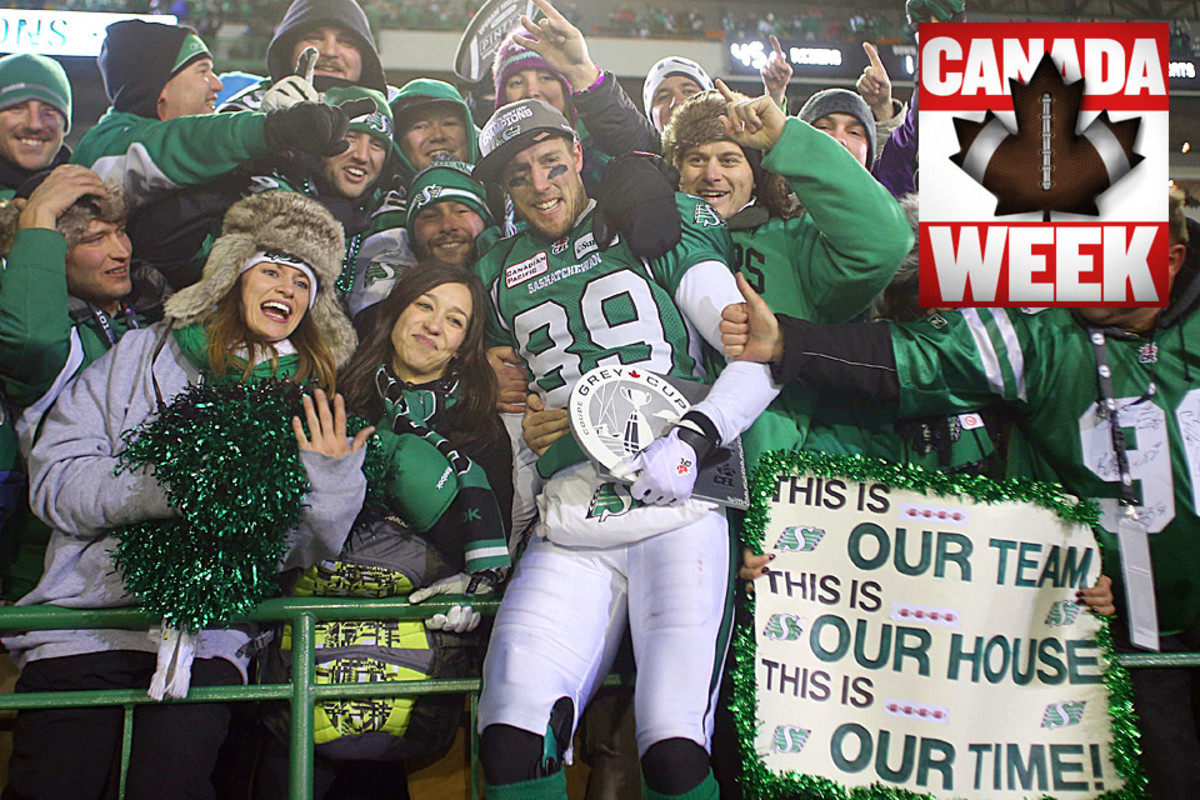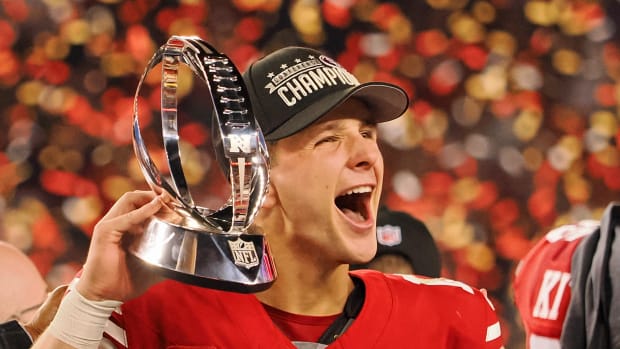They’re Ours, We’re Theirs
For some people, all they know about the Canadian Football League comes from the time Homer Simpson watched the CFL draft, and the announcers say the Saskatchewan Roughriders scored only four rouges all last season. The show was missing the Ottawa Rough Riders, and how two teams with the same basic name were in the same eight-or-nine team league for 35 years. Oh, and one of them once drafted a dead man. If that was in there, joke-wise, you’d pretty much be covered.
CFL jokes tend to be about how this is a small-time, oddball league, and most of them are therefore true. There are Canadians who hate the league because it’s small: because it has often teetered on the edge of dissolution, because it features 18-game regular seasons with eight or nine teams, because Canadians have to play. A lot of people dismiss it, essentially, because it’s not the NFL.
And that’s one reason to love it, actually. The Canadian Football League is, at its heart, a small town. It’s been around forever, through all sorts of weather, and everybody knows everybody. It’s part of the charm. In Hamilton, the same mom and son, Barb and Steve, have been bringing fresh-baked cookies to practice since 1980 or so. They’re like family.
There are reasons for this. The CFL’s minimum salary just rose to $50,000, and not many players stray too far into six figures. The line between fans and players has never been much of a line, if only because their respective take-home (quarterbacks excepted) aren’t very different at all.
Kory Sheets, the MVP of the 2013 Grey Cup, still worked as a truck driver’s assistant in the oil fields last winter.
So Saskatchewan running back Kory Sheets, the MVP of the 2013 Grey Cup, still worked as a truck driver’s assistant in the oil fields last winter, along with two other members of the team. The guy who beat out Sheets for the league’s Most Outstanding Player award, Calgary running back Jon Cornish, was named Canada’s top athlete in December. He did his conference call while on break from his day job as an investment consultant at a bank, in a shopping mall.
The silos of bigger pro sports don’t really exist here, and the result is a league where fans and players can actually live in the same world. Milt Stegall was already the league’s all-time leader in touchdowns when his wife became pregnant with his second child, and he needed a bigger place to live. It was his final season after a stellar career as a wide receiver in Winnipeg, and a local businessman named Ernie Epp offered his basement.
Stegall was skeptical, but he checked it out. The basement was about 2,000 square feet, with a kitchen and a bathroom, and the whole family moved in, rent-free. Epp’s wife watched the kid on game days, and Stegall—a Cincinnati native who played collegiately at Miami (Ohio)—still calls them the Canadian grandparents. Ask Stegall what he misses most about the game, and he pauses. He says it’s the people who watch.
“We need them more than they need us,” says Stegall, who played parts of three seasons with the Bengals and who now does TV analysis for TSN. “I don’t know if everyone understands that, but we need them more than they need us. This is not like the NFL where they don’t need fans to show up to the games because they have the big TV contracts and the revenue sharing.
“Guys who play in the CFL, a majority of us are from small colleges, and if we did play in the NFL it wasn’t for that long, so most of us didn’t have that much notoriety until we got to the CFL. So we’re thinking, Wow, this is a pretty cool experience, being recognized.
The MMQB is invading Canada. On Monday, Bears coach Marc Trestman wrote about his time north of the border and everything you need to know about the CFL’s rules and quirks.
On Tuesday, Doug Flutie shared his love of all things CFL, especially the wide-open offenses that are finally making their way to the NFL decades later.
“Because when we go home, the second we cross that border, we’re just a normal, everyday citizen, and nobody recognizes us as a football player or anything else. But when we come back to Canada …”
Then they’re ours, and we’re theirs. Size isn’t strength; a connection is. The metropolitan areas of Vancouver, Montreal and Toronto make up about a third of the national population, and the Grey Cup works fine there, despite that embarrassing 15-year absence from Toronto after the apathetic debacle of 1992. Almost a third of the SkyDome was empty for that game, or about half the population of Moose Jaw, Saskatchewan.
But the championship week works best on the Prairie, in the real cold, outdoors. The Grey Cup inhabits places like Edmonton, Calgary, Regina, and Winnipeg. There, it truly matters, and the tribes all gather together, every year. It’s so damned earnest.
“The Grey Cup is a massive Canadian party, but it’s on a much more human scale,” says Peter Dyakowski, a guard for the Hamilton Tiger-Cats who also was named Canada’s Smartest Person in a CBC reality show, and has appeared on Jeopardy. “It’s the same people every year. It’s a human-sized league.” Dyakowski, for the record, has been an all-star, lives in a middle-class neighbourhood, and doesn’t shop in Hamilton’s fancier supermarkets.
There’s a nostalgia to all this, sure, and the small town isn’t always pleasant. In this year’s labour dispute the league played hardball, and the players got small concessions on money and safety in a league with a big new TV contract, and a ninth team, and new stadiums either built, or renovated, or being built across the country. The labour fight, which didn’t cost anything but goodwill, may have signified that the recent growth in revenues is going to change this thing.
But it hasn’t, not yet. Every sport is at least partly defined by when it begins, and when it ends. Baseball begins in the spring and ends in late fall. The NFL charges into winter, and at the last minute usually escapes to somewhere warm. Hockey and basketball keep you inside all winter, and stop when you want to go outside.
And then there is the Canadian Football League. It begins with the relief of summer, and ends in late November, usually on a dark cold night, with winter yet to come. Like the CFL, winter in Canada is different everywhere. And like the CFL, we all get through it together.
Bruce Arthur is the lead sports columnist for the Toronto Star, Canada’s largest newspaper. He spent 13 years at the National Post, one of Canada’s national papers, and has covered six Grey Cups.







































